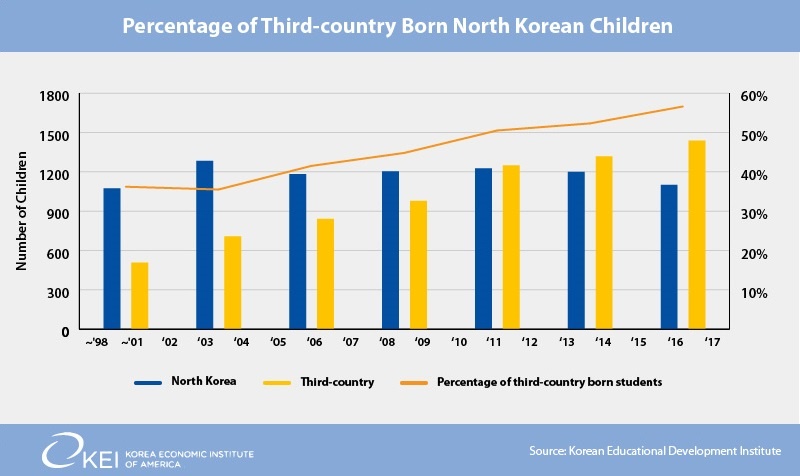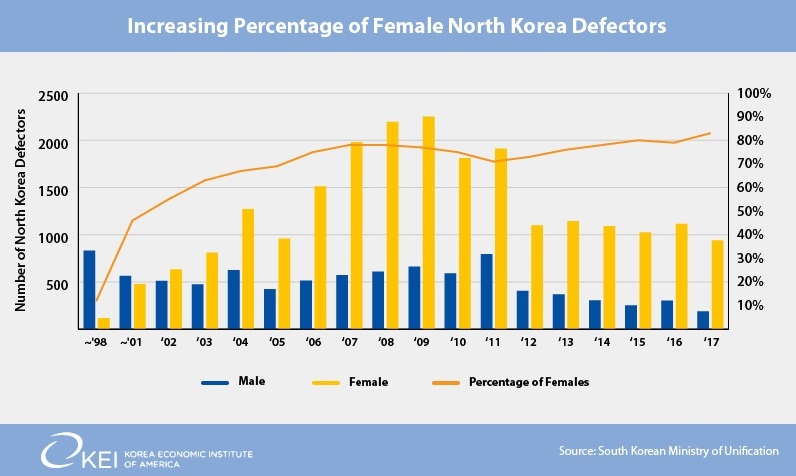The Peninsula
What Do We Know About Third-Country Born North Korean Children?
Published August 7, 2018
Category: North Korea, South Korea

By Suyeon Ham
Third-country born North Korean defectors refers to the children of at least one North Korean defector born in a third country, other than North or South Korea, such as China. As the motives and routes of defection from North Korea diversify, the number of North Korean defectors’ children born in third countries has been increasing continuously. These children often experience severe difficulties in the process of their settlement in South Korea because they were not eligible for the economic support provided to other defectors under the North Korean Defectors Protection and Settlement Support Act. Considering that the reality of increased entry of third-country born North Korean children, the South Korean government has expanded its policies on economic support to them. Yet many of them face difficulties in adapting to the South Korean society.
Increasing Number of Third-country Born Defectors
During the mid-1990s famine, which killed hundreds of thousands of North Koreans, most defections were due to the lack of basic needs of life, such as starvation and forced labor. However, a recent trend has shown a steady shift in reasons for defection. Nowadays, North Koreans defect increasingly because of disgust with the North Korean regime and ideology, longing for freedom, and the desire for an improved quality of life and better future. In addition, while crossing over the Military Demarcation Line was relatively frequent in the past, defection from North Korea via third countries has increased in the recent years. North Korean defectors stay in third countries such as China, Laos, Vietnam, Myanmar, and Thailand, but their stay in China is the longest. This is because North Korea’s boarder with China makes moving to any other third country without crossing China geographically difficult, and also because it is easier for defectors to find work, even if illegal, in China through brokers.
Besides the change in defection routes, the continued increase in the ratio of women among North Korean defectors could be cited as another reason for the increase of third-country born North Korean children. The number of female defectors surpassed that of male defectors and the percentage of female defectors has increased as a whole.[1]

Fleeing North Korea women, especially in China, are frequently forced into marriages with poor local farmers, or into the sex trade because they could be arrested and sent back to North Korea otherwise. For these reasons, there are many half-North Korean children in Northeast China, and some of them escape to South Korea with their North Korean mother. The number of third-country born North Korean young defectors in South Korea has increased constantly and as of 2015 exceeded 50 percent of all defectors in South Korea.
Change in Government Policy in South Korea
The South Korean government has recently made efforts to strengthen institutional support in line with the trend. On February 7, 2017, South Korea’s Ministry of Unification announced a new support program for North Korean defectors, called “Act on the Protection and Settlement of North Korean Defectors.” From the end of February 2017, the parents of North Koreans living in South Korea could receive a one-time subsidy of 4,000,000 KRW per child who is born in a third country. This means that the North Korean families with third-country-born children in South Korea are now able to receive the same level of government financial support as families who are all born in the North. However, only North Korean parents or grandparents who defected to South Korea and are supporting children born in third countries that emigrated to South Korea before the age of 16 are eligible for the additional subsidy.
Further, to support the education of North Korean children born in third countries and entering South Korea in their adolescence, arrangements have been made so that they may also apply for special admission to university within entrance quotas from 2019. Moreover, various policies to reinforce educational support for them are under discussions, such as a plan for simplifying the procedure for the recognition of education completed in China, the expanded assignment of Chinese language instructors to alternative education facilities, and the college tuition support funded by private donations to the North Korean Hana Foundation.

Problems
Despite government programs and a growing number of organizations that provide support to defectors, many problems remain not well known and unsolved. The biggest difficulty that third-country-born children face is the language barrier. Korean is not their first language and most of them barely have an opportunity to learn it before they come to South Korea. Many children from unrecognized marriages in third countries did not even have access to education since they do not have a legal identity. Although they learn Korean before they enroll in a Korean educational institute, it is impossible to have the fluency needed to follow the curriculums. Language difficulty becomes a big obstacle not only for the learning ability, but for hanging out with the friends of their age. As a result, many of them fail to catch up on studies in school and have difficulties making friends and adjusting to school life. It is also a problem that there are insufficient teachers to teach the students who are poor at Korean.
In addition, identity confusion is also one of the problems the children experience. In most third-country born North Korean children, their mothers are North Korean defectors and their fathers are local third-country men. So the children who are poor at Korean and have family members with diverse nationalities and have South Korean nationality for their own cannot readily answer the question, “Where are you from?” Besides, they are often isolated by their classmates because of their broken Korean, sometimes for the difference in their appearance, and this deeply hurts them.
Conclusion
In these days when we have experienced a historic turning point in South-North relations and U.S.-North Korea relations under the Moon Jae-in government, unification has become a step closer. At this moment, improving government policies and the educational system is the first step for unification and true social integration. To help third-country-born Koreans settle down in society as Koreans, social attention and efforts to expand institutional support are needed for their systematic education and the development of a healthy identity.
Su Yeon Ham is a graduate student with the China Studies Program at SAIS. She is currently an Intern at the Korea Economic Institute of America. The views expressed here are the author’s alone.
Photo from Khaled Monsoor’s photostream on flickr Creative Commons.
[1] 통일부 (Ministry of Unification)
